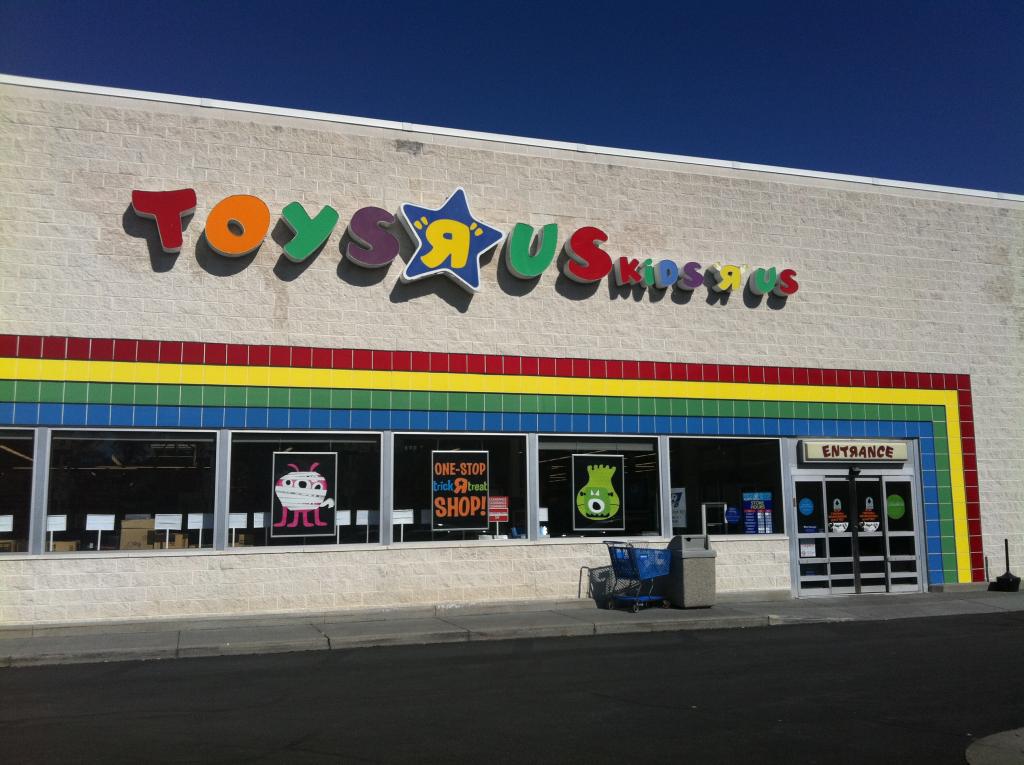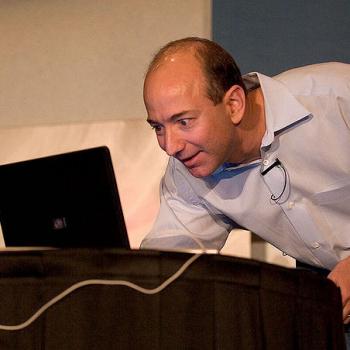![https://commons.wikimedia.org/wiki/File%3AWhole_Foods_Markham_Canada.jpg; By ChadPerez49 (Own work) [CC BY-SA 4.0 (http://creativecommons.org/licenses/by-sa/4.0)], via Wikimedia Commons](https://wp-media.patheos.com/blogs/sites/533/2017/06/Whole_Foods_Markham_Canada.jpg)
So Amazon is buying Whole Foods, and everyone is speculating that Amazon is on its way to becoming Buy N Large, selling everything and destroying its competition, and destroying the local grocery store, so that in a few short years, we’ll all be ordering our groceries online.
Nevermind that this is the Peapod model (do all the pundits live in areas without Peapod?), but the few times I’ve looked at them, I’ve found them substantially more expensive than “regular” grocery stores, not even taking into account their delivery charge. Maybe there’s a certain demographic that is fairly indifferent to prices, or maybe Amazon really can do this more cheaply than Peapod, but I just can’t picture Amazon being able to offer “regular” groceries at a price competitive with Meijer, not to mention Aldi, and I can’t see them creating a new business model in which customers mentally differentiate between Amazon-ordered staples and perishables, or shoppers finding the convenience worth the added cost. Not to mention the issues around picking out exactly which 5 apples you want, or whether the almost-past-date bagged salad looks good enough to take a chance on — items which, again, I suppose, are irrelevant to folks with high disposable income and small grocery needs (singles or partnered without kids).
And there is nothing magical about e-commerce. Just because one orders something via a computer, doesn’t automatically make it more magically modern and futuristic. Why should the model of “order online, deliver in small quantities” make more sense than “deliver in large quantities to locations easily accessible to many consumers, who can select their choices in person” for items which are not so specialized as to make a retail location unfeasible (and which would have been a mail-order catalog in the past)? After all, ordering items online, and using the internet to facilitate making additional descriptive information, reviews, etc., available, is high-tech. Delivery via UPS vans, not so much.
But at the same time, to the extent that people have flocked to e-commerce (and that for multiple reasons, including the willingness of those retailers to sell at a loss to gain a customer base — see this Forbes piece on Amazon, and the exemption, in many cases, from sales taxes — remember, that’s 10% in Illinois), it has had some genuinely negative effects.
Consider Blockbuster. They got hammered by Redbox, for your everyday video rental needs, and by Netflix, for people who want to binge-watch. There was still a demographic that patronized Blockbuster, or Hollywood Video, or Family Video, and wanted a greater selection of videos than Redbox offered, but don’t want to go through the preplanning that it takes to get Netflix videos in queue. (Does it still work like that? Or is it all streaming now?)
Or bookstores. Amazon is great if you have a specific book in mind that you’re looking to have arrive in a couple day’s time. If you just care about the most popular titles, you’re just fine with your generic discount store: Target, Walmart, Meijers, etc. But if you want to browse, in general, or want to choose the best of several available options (guidebooks for a vacation, for instance), you need a real bricks-and-mortar bookstore, of which there are a declining number — in my neck of the woods (and that’s a suburb with lots of easily-accessible shopping), that means Barnes and Noble, a 15 minute drive without traffic. And that’s it (except for Half-Price Books). If they go, it substantially changes the way book-buying happens, and takes away options that are very useful to a great many people.
Or clothing. There’s surely got to be a massive number of returns for online-sold clothing — at least for women’s clothes, and for fitted clothing. I suppose men’s clothes, which are reliably-sized and without much variation in style, or muumuus, or maybe maternity clothes, can be reliably bought online. I guess yoga pants also fit in that category, since, so far as I can tell, they just fit all women equally poorly. But for those of us who have to try on every dress in stock to find one that looks moderately acceptable, it makes no sense.
But, then again, I still have a subscription to a home-delivered, paper newspaper.
Now, if you’ll excuse me, I have some kids I have to go chase off my lawn!
Image: https://commons.wikimedia.org/wiki/File%3AWhole_Foods_Markham_Canada.jpg; By ChadPerez49 (Own work) [CC BY-SA 4.0 (http://creativecommons.org/licenses/by-sa/4.0)], via Wikimedia Commons













